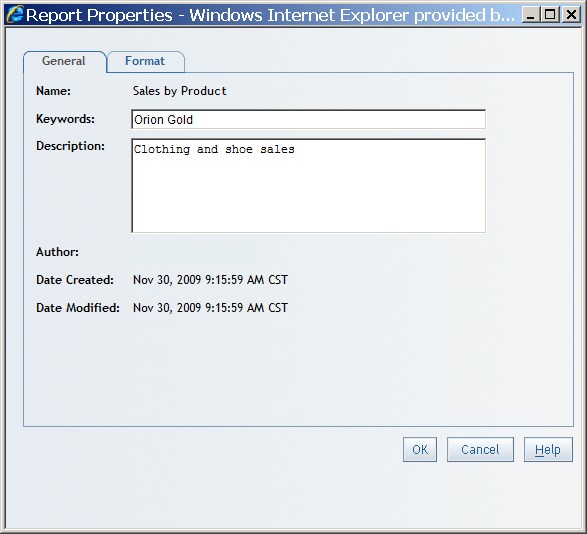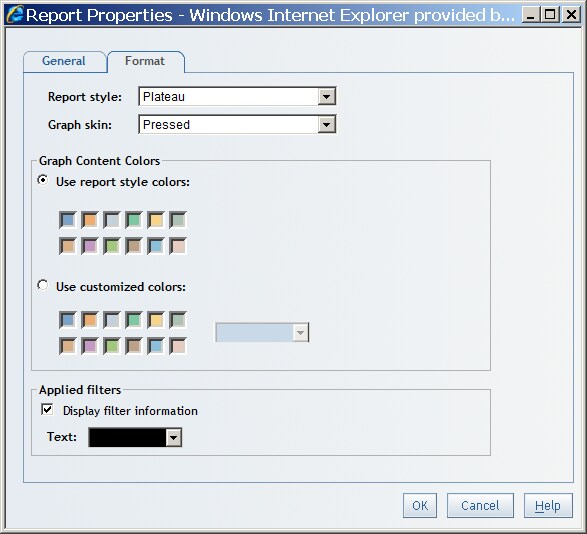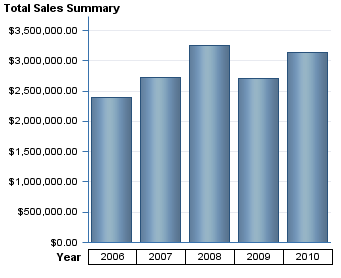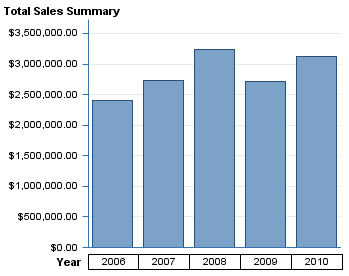Modifying Report Properties
To set or change the
report style, filter display, keywords, and description for a viewed
report, complete these steps:
-
If you are authorized to save changes to the report, on the General tab, set or modify keywords and the description. Separate multiple keywords with commas. Keywords cannot use these characters:
< > & # / \For information about valid keywords, see Naming Reports, Folders, and Templates. -
Note: Although only authorized users can save the changes, all users can make changes on the Format tab for viewing purposes.
-
Specify whether you want to use the report style colors or customized colors. The report style colors are the default colors for the report. In the custom colors, select the first color square (with the darker border) to access the color palette. When you select a color from the palette, it is copied to the first color square. Later, when the graph is rendered, the color that you selected is used for the bars, lines, and so on.
-
Specify whether you want to display applied filter information with the report. You can also use the color palette to specify the text color for the filter text. The filter information is included in printed reports.The applied filter display shows all filters that are active for a given report. The Applied Filters field displays the following information:The applied filter information displays above each table or graph that appears in a section. If there are no filters for a given table or graph or the section as a whole, the following text appears above the table or graph: Applied filters: None. The filter information is included in the printed reports.



